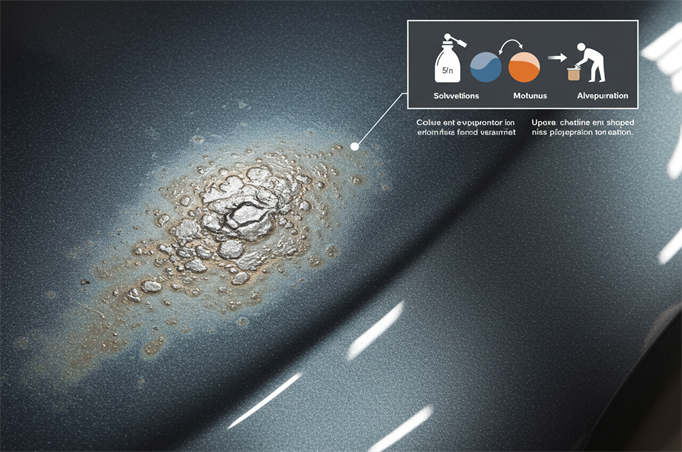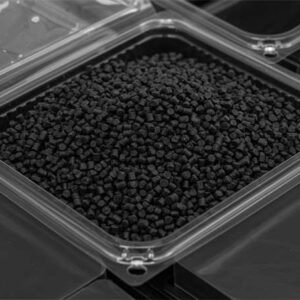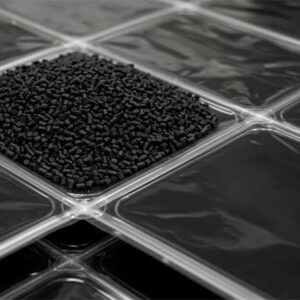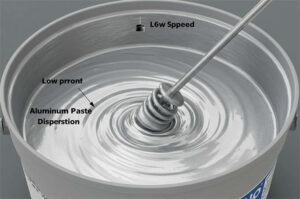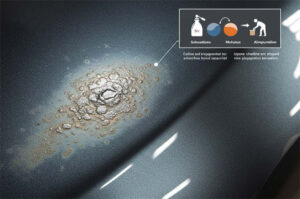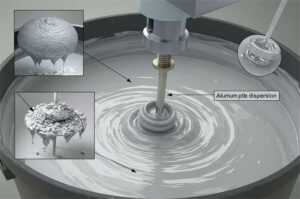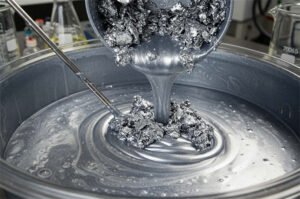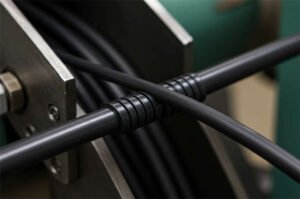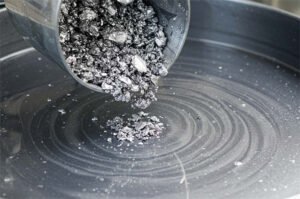Getting a smooth metallic finish can feel easy when you use aluminum paste the right way. You need to start with good preparation, pay attention during application, and finish with care. Always check the paste before you open it. Safety matters, so wear gloves and work in a well-ventilated space. You can brush, spray, or print the paste depending on the look you want. > Tip: Small details make a big difference, so take your time and enjoy the process.
Key Takeaways
- Always look at the aluminum paste for leaks or separation before you use it. Getting ready the right way helps you get a better finish.
- Put on safety gear like gloves and goggles when you use aluminum paste. This keeps you safe from things that can hurt you.
- Clean the surface very well before you put on the paste. If the surface is clean, the paste sticks better and the finish looks nicer.
- Use thin and even coats of aluminum paste. This stops streaks and bubbles and gives you a smooth, shiny look.
- Wait for each layer to dry all the way before you add more. Being patient while it dries makes the finish stronger and last longer.
Preparation
Check Paste Condition
Check the aluminum paste before you use it. Make sure the container is closed tight and not broken. If you see leaks or dents, the paste might not work right. Look at the paste to see if it has split into layers. If it has, stir it gently so the aluminum and solvent mix well. If you keep the paste for a long time, check for rust or a bad smell. Good pastes from trusted brands help you avoid these problems.
- Choose pastes that are safe for you and the planet.
- Keep the paste inside, away from sun and rain, between 59–104°F (15–40°C).
- Use the paste soon after opening, and close it tight when done.
Tip: Stir the paste slowly. If you stir too fast, the shiny flakes can break and the finish will not look good.
Safety Precautions
Always think about safety when using aluminum paste. Wear gloves to keep your hands safe. Put on goggles to protect your eyes. A dust mask or respirator keeps you from breathing in small bits. Wear long sleeves and pants to cover your skin.
- Gloves
- Goggles
- Dust mask or respirator
- Long-sleeved clothes
Keep the paste in a cool, dry spot. Do not put it near heat or fire. Follow local rules when you throw away leftover paste or water you used for cleaning. This helps keep the earth safe.
Surface Cleaning
The paste sticks better to a clean surface. Dirt, oil, or old paint can stop the paste from sticking.
Things like dirt or oil block the paste from sticking to metal, so the finish will not last.
Here’s a simple chart for cleaning agents:
| Cleaning Agent | What It Does |
|---|---|
| Detergents | Clean off dirt and things that dissolve in water |
| Solvants | Remove oil, grease, and wax |
| Acidic Cleaners | Take off rust and mineral build-up |
| Alkaline Cleaners | Get rid of grease and other stuff |
| Degreasers | Work well on oil and stains |
Pick the cleaner that works best for your surface. Wash and dry the area before you start the next step.
Sanding and Priming
Sanding makes the surface rough so the paste can stick. Use fine sandpaper and sand in one direction. Wipe away dust after sanding. Then, put on a primer. The primer helps the paste stick and makes the finish smoother. Sanding and priming are important if you want your metallic finish to last and look nice.
If you do all these steps, you will be ready to use aluminum paste the right way.
How to Use Aluminum Paste
Application Methods
You have several ways to use aluminum paste for a smooth metallic finish. Each method works best for different surfaces and project sizes. Here are the main options you can try:
- Brossage
- Pulvérisation
- Screen printing
Brushing gives you control over small areas. You can reach corners and edges easily. Spraying covers large surfaces quickly and helps you get an even coat. Screen printing works well for flat panels and designs. If you want a shiny, smooth look, always apply thin, even coats. Thick layers can cause streaks or bubbles.
Tip: Test your chosen method on a small spot first. This helps you see how the finish will look and lets you adjust your technique.
Brushing, Spraying, Screen Printing
Let’s look at how each method affects your results:
- Brushing is great for touch-ups and small projects. You can control the amount of paste and fix mistakes fast.
- Spraying works best for big surfaces. You get a smooth, shiny finish if you spray thin layers and keep your hand steady.
- Screen printing is perfect for designs or logos. You can create patterns and cover flat surfaces with even color.
If you use aluminum paste with fine particles, you get a smoother and more reflective finish. Fine particles bond better with the surface and reduce roughness. This makes your metallic coating look shiny and professional.
Here’s a quick table to help you choose:
| Method | Best For | Finish Quality |
|---|---|---|
| Brossage | Small areas | Good control, easy fixes |
| Pulvérisation | Large surfaces | Smooth, shiny, even |
| Screen Printing | Flat panels/designs | Crisp patterns, even color |
Note: Thin coats always look better. Thick layers can hide the shine and make the surface rough.
Mixing and Dispersion
Getting a smooth metallic effect starts with mixing the aluminum paste the right way. You need to soak the paste in solvent for at least half an hour. This helps the flakes spread out and mix well. Stir gently after soaking. Fast or rough stirring can break the flakes and ruin the shine.
You can add a dispersing additive to help the paste mix better. If you see lumps or granules, keep stirring until everything looks smooth. Sometimes, you need a wetting agent or dispersing agent if the paste has been stored for a long time.
Keep the flakes lined up parallel to the surface. This makes the metallic effect stronger and more even. Avoid high-speed mixers. They can damage the flakes and make the finish dull.
Tip: If you want the best results, test surfactants before you mix them in. This can boost the performance of your paint.
When you use aluminum paste, you can choose between leafing and non-leafing types. Leafing paste gives you a chrome-like shine and high reflectivity. It works well for roof coatings and containers. Non-leafing paste sticks better and stays stable, even after several coats. It’s perfect for cars, furniture, and electronics.
If you want a finish that lasts and looks great, use aluminum paste with fine particles. These tiny flakes cover the surface densely and make it smooth and shiny.
Remember: The way you mix and apply the paste changes how your metallic finish looks. Take your time and check your work as you go.
Finishing Steps
Drying and Curing
After you use aluminum paste, you need to let it dry and cure. Drying means the surface feels dry to the touch. Curing means the finish gets strong and lasts longer. Drying and curing times can change depending on the type of paste you pick. Always check the label or packaging for the best results. Some pastes dry in just a few hours, while others need a whole day. If you rush this step, the finish might not look smooth or shiny. Place your project in a clean, dust-free area. Try not to touch the surface until it is fully dry. If you want a tough finish, let it cure for as long as the maker suggests.
Tip: Warm, dry air helps the paste dry faster. Cold or damp air can slow things down.
Polishing and Sealing
Polishing makes your metallic finish shine. Sealing protects it from scratches and dirt. You can pick from different types of polish. Each one works best for a certain job. Here’s a quick guide:
| Types of Polish | Best Use | Méthode d'application | Pros | Cons |
|---|---|---|---|---|
| Cream Polishes | Heavy oxidation, deep clean | Cloth or pad | Long-lasting shine, deep clean | Needs more effort to buff |
| Liquid Polishes | Regular maintenance | Soft cloth | Easy, quick results | Needs frequent application |
| Paste Polishes | Tough stains, oxidation | Pad or brush | Strong cleaning power | Can be abrasive, harder to use |
| Spray Polishes | Large surfaces, quick touch-up | Spray and wipe | Fast, even coverage | Lighter finish |
| Polishing Waxes | Protection and shine | Cloth or pad | Polishes and protects | Won’t remove heavy oxidation |
| Metal polishing kits | Full polishing process | Follow kit instructions | All-in-one, versatile | More expensive, more steps |
You will need a few tools to get the best shine and protection:
- Cleaners
- Sandpapers
- Scouring pads
- Cleaning rags
- Metal polish
- Microfiber cloths
- Buckets and clean water
Start by polishing with a soft cloth. Move in small circles. Wipe away any extra polish. After polishing, seal the surface with a clear coat or wax. This step keeps your finish looking new for a long time.
Note: If you want your metallic finish to last, always polish and seal after you use aluminum paste.
Troubleshooting
Streaks and Uneven Finish
You might notice streaks or uneven spots after you apply aluminum paste. These marks can make your metallic finish look patchy or dull. Let’s figure out why this happens and how you can fix it.
Here’s a quick table showing common causes:
| Cause | Description |
|---|---|
| Non-uniform metallurgical structure | Differences in how the aluminum reacts to etching can change the brightness or reflectivity. |
You can also see streaks from different sources. Check out this table:
| Type of Streaking | Description |
|---|---|
| Billet structure streaks | These come from chill zones or segregation in the extrusion billet. |
| Extrusion process streaks | You’ll spot these at welding seams or where the process changes. |
| Die streaks | These depend on strain, strain rate, and cooling rates during extrusion. |
Other reasons include:
- Variations in surface finish from uneven cooling.
- Changes in alloy composition that affect how the finish looks.
If you see streaks, try sanding the area gently and reapplying a thin coat. Always keep your strokes even. If you make a mistake, you can use duct tape to lift off aluminum particles. You can also dab a bit of ketchup or cola on the spot. These acidic substances help turn the particles into aluminum oxide, which rinses away easily.
Tip: Always test your fix on a small area first. You don’t want to make the problem worse.
Bubbles and Imperfections
Bubbles and tiny flaws can pop up if you rush or skip steps. You want your finish to look smooth, so let’s tackle these problems together.
Try these steps:
- Check the viscosity of your paste. Thicker paste needs a bigger spray nozzle.
- Slow down when you apply the paste. Fast spraying can trap air and cause bubbles.
- Stir gently. Fast mixing puts air into the paste.
- Treat the aluminum surface well. Remove any oxide layer before you start.
- Pick the right cleaner. Acidic or alkaline cleaners help etch the surface.
- Rinse the surface well. Leftover chemicals can cause flaws.
- Don’t let parts dry in drain zones. This can create new oxide layers.
- Use deionized or reverse osmosis water for the final rinse. This keeps mineral spots away.
If you spot bubbles after drying, you can sand the area lightly and reapply a thin coat. Always work in a clean space and keep your tools free of dust.
Note: Taking your time with each step helps you avoid most problems. If you see a flaw, fix it early before it spreads.
You can get a smooth, shiny metallic finish with aluminum paste if you follow the right steps. Start with good prep, mix the paste well, and use thin, even coats. Let each layer dry before adding more. Always wear gloves and work in a clean, safe space.
- Aluminum paste gives your project a bright look and helps protect against rust.
- You can use it on many surfaces, and water-based options are safer for the planet.
- Experts say to check the product’s quality and use gentle mixing for the best shine.
Don’t worry if you’re new—just take your time and enjoy the process. You’ll be amazed at what you can create!
FAQ
How do you store aluminum paste after opening?
Keep the container tightly closed. Store it in a cool, dry place away from sunlight and heat. Make sure you wipe the rim before sealing. This helps the paste last longer and keeps it from drying out.
Can you mix aluminum paste with other paints?
Yes, you can mix aluminum paste with compatible paints. Always test a small amount first. Stir gently to avoid breaking the flakes. Mixing with water-based or solvent-based paints works best. Check the label for any special instructions.
What should you do if the finish looks dull?
Try polishing the surface with a soft cloth and metal polish. If it still looks dull, apply another thin coat of aluminum paste. Make sure you let each layer dry fully. Sometimes, sealing with a clear coat brings back the shine.
Is aluminum paste safe for kids to use?
Aluminum paste is not safe for kids without adult supervision. Always wear gloves and a mask. Work in a well-ventilated area. Keep the paste away from your eyes and mouth. If you get any on your skin, wash it off right away.
How do you remove aluminum paste from tools?
Wash your tools with warm, soapy water right after use. For stubborn spots, use a solvent recommended on the paste’s label. Dry your tools well before storing. This keeps them clean and ready for next time.

